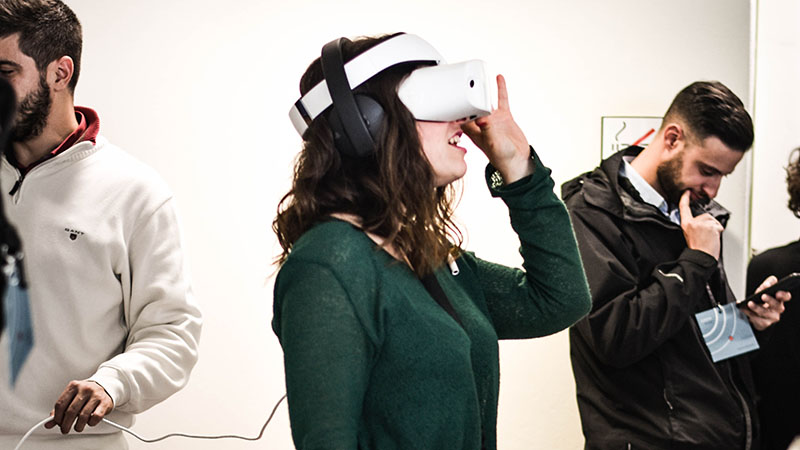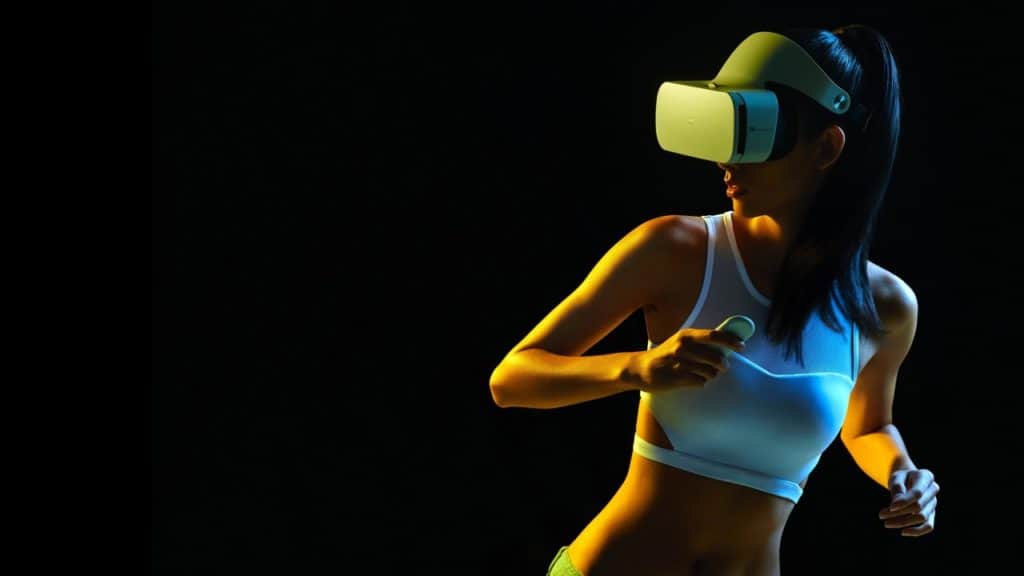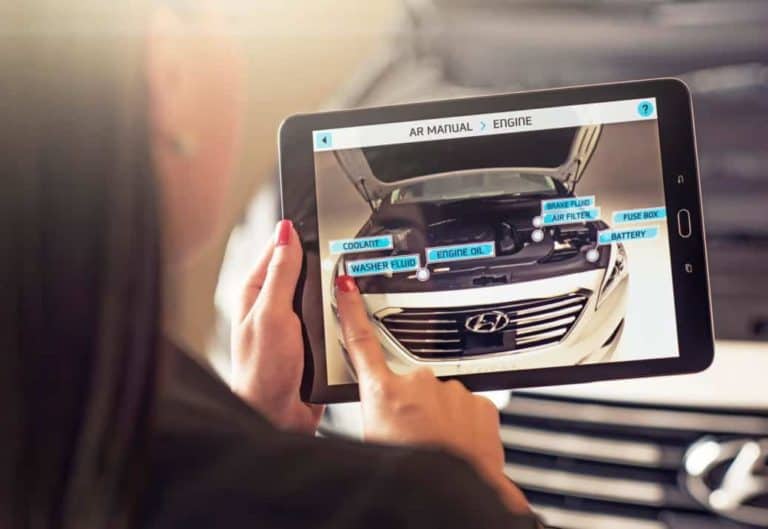No Results Found
The page you requested could not be found. Try refining your search, or use the navigation above to locate the post.

VR is reshaping the way companies approach staff training.
Workplace training has always been difficult for most companies for a number of reasons, geographic boundaries, safety concerns, and complex training scenarios. These inadequacies have left training incomplete in many circumstances. VR(virtual Reality) is changing the training landscape and filling in the gaps.
The argument for VR in corporate training is simple – it can increase engagement and knowledge retention levels, and employees can be trained in a safer, more cost efficient way. VR enables employees to learn through practical experience. Experiential learning has long been viewed as the most effective way to learn and studies have shown that learning through experience increases the quality of learning, and retention by 75-90%.
In most cases, companies use VR to allow their employees to practice dealing with real-world scenarios. Here are some other advantages of using VR in training:
How are companies using these technologies in their employee training? Companies all around the world are quickly taking advantage of this technology. Let’s look at some case studies.
How is ExxonMobil Using VR for training?
Exxonmobil has invested heavily inVR in their training program. It has been under development for some time, so chalk up ExxonMobil’s virtual reality training initiative to serendipity. The effort is coming to full maturity in the middle of a pandemic, when remote learning is both necessary and encouraged.
As many as 18 VR-based modules in various stages of development will soon enable ExxonMobil to train workers remotely for its new $500 million polypropylene plant in Baton Rouge. The modules will immerse operators in a computer-generated environment to perform critical tasks, and will simulate a physical presence in a nonphysical world to guide them through various scenarios.
ExxonMobil is using VR for safety training. Users can put on a helmet and headphones, grab a controller, and plug into the virtual world, engaging multiple senses. They can turn their heads, walk around and watch the VR world react. And long after the game is over, the skills learned will remain relevant. For oil and gas operators, practice in a digital garage simulation is more than a game – it’s a lesson.
Immersive simulations can transport VR users onto the loading dock of a liquefied natural gas (LNG) tanker, where they spend a day on the job assessing and reacting to different scenarios, from the mundane to the complex. The experiences allow employees to hone their instincts, catch their mistakes, and make instant decisions so that they’re better equipped to work smarter and safer
How UPS Uses VR For Employee Training?
UPS has announced the expansion of its driver training to include virtual reality (VR) headsets at its UPS Integrad training facilities in Cologne, Germany, and Burton upon Trent, UK. The VR headsets simulate the experience of driving on German and UK city streets while teaching a more memorable classroom lesson.
Virtual reality allows for real-world experiences without danger to employees and the general public. This type of training is especially helpful for logistics companies like UPS, where workers are in fast-paced settings inside the hub and out on the road, behind the wheel.
The brown trucks seen crisscrossing neighborhoods throughout the country are the most visible, well-known members of the UPS fleet. While drivers are taught safety measures on the road, a good bit of their training is now taking place inside a headset.
“The headsets for UPS drivers in Cologne and Burton upon Trent use images of local streets to identify typical local road hazards,” said Thomas Scholz, manager of UPS Integrad in Cologne.
Walmart use VR to train their employees
Since 2017, the retail giant has used VR applications to train and assess the skills of their employees. The applications incorporate 360° video taken from within one of their stores and interactive experiences that challenge the employee to solve interpersonal conflicts unfolding in front of them. Managers can see how an employee might deal with a difficult customer without the need of any real-life drama.
Much of the application’s utility is to step into real-life scenarios as an employee, but in one instance, the employee is forced into an alternate perspective. In one moment, they are a cashier with a long line of customers in front of them. Then, they suddenly find themselves as one of the customers reading a text from their spouse asking when they’ll be home. This profound facet of the experience is a testament to the depth of what can be expressed through VR training.
Walmart is distributing 17,000 headsets to 5,000 locations that will reach a million employees.
The future is now
A 2020 PwC study suggested that at scale, VR can be significantly more cost effective than traditional soft skills training options, finding that employees completed VR programs up to four times faster than in-person trainings, and 1.5 times faster than e-learning programs — in large part because the immersive experience made it easier for learners to stay focused.
The study also found that employees who completed VR training felt almost four times more emotionally connected to the content than classroom learners did, and more than twice as connected as e-learners, illustrating the huge impact that VR can make.
With the increasing number of companies offering VR training to their employees and the burgeoning advancements in VR technology, there is no better time than the present to see what this exciting new medium can do for your company.

After 12 long awaited years, Valve has recently announced that there will now be a new release of a half-life title, entitled Half Life: Alyx, but unlike any other game Valve has produced – Half Life: Alyx will be exclusive in VR (Virtual Reality). With its expected arrival date March 2020, this opens up an array of new PC VR tech, that will hopefully change the views on the VR and the gaming industry at once.
While some have questioned Valve’s lack of investment in VR – it is said that most successful game developers and businesses in the industry have been very frugal regarding their investments and team size. Not to mention, they have built in the VR Index Platform, headset, and controllers along the way. All this to say that Valve’s critique was a bit harsh.
With Valve’s SteamVR platform, Valve has made it easy to access with the support of nearly all PC VR headsets; With that said, Half Life: Alyx is compatible with the Valve Index, HTC Vive, Windows Mixed Reality, Oculus Rift and Oculus Quest.
The HTC Vive, Oculus Rift, and Oculus Quest account for 82% of the Steam community, according to the new Steam Hardware Survey, another 5% was accounted for Windows Mixed Reality – thus concludes that Half-Life supports nearly 87% of all Steam headsets.
Resulting to Valve’s own statistics, over 1% of all PCs surveyed, had VR headsets attached, seeing that Steam has 90 million active users worldwide, it brings in around 1 million headsets; which helps the expectancy of Half-Life: this year, will drive many users to invest in VR hardware.
With Valve’s slow and steady approach for Half life: Alyx and index platform, the potential for this game will pay off; In addition, bundling the game for free is a great way for Valve to help support users with the best experience possible.
Compatible with Oculus Quest it ensures that it will hold an even larger amount of VR headset users, that can play on Steam and enjoy Half-Life: Alyx. With previous following years, PC VR has been in a slump, but with the results Half-Life: Alyx is bringing in now; but, increase the sales of VR headsets and PC hardware and the potential future of the VR industry.
The page you requested could not be found. Try refining your search, or use the navigation above to locate the post.

Virtual Reality is one form of what we call extended reality; but, in its most immersive form. Basically, where we are entering a completely different and digital environment.
Thus, it all started in the gaming world, when we were once introduced to Virtual Reality games- which could immerse us into that surreal world; But today it is now looked over as, ‘how businesses are now using this technology to improve their growing companies’.
Companies such as, Apple and Samsung have really focused on VR and actually ended up giving phones that VR capability; one good example is Virgin Holidays.
What their doing is, they’ve started to film some of the resorts and some hotels in a VR environment, so as a holiday maker you can now go into their office and ask to choose which resort you would like to experience.
Just by using their VR headsets you can submerse yourself into that resort or hotel, and experience everything you would want to see and do.
The aspect of ‘trying before buying’ is an important element for any business; thus, it doesn’t just work for hotel resorts, but for cars and even if you wanted a completely different look (as interior design), you can easily find out what you want from a VR headset.
Virtual Reality technology has also found its useful aspect in training; for example, environments in the army. They have also put in special scenarios to help train the soldiers in very life-like scenarios, where they might encounter in real combats.
Again, surgeons, chefs and even hotel staff members have found this new savvy technology to help them encounter any situation whether it’s preparing a meal or going to perform surgery on a patient’s heart.
Virtual Reality will allow us to learn, grow and entirely experience new worlds through the access of this technology.
VR can firmly improve and enhance your business; with better operations and ultimately cut expenses. Corporations are now investing in Virtual Reality to drive proficiencies- soon enough we are now seeing an outcome of a solid degree in profitability.
It’s a well known fact that VR requires a certain degree of financial risk. But, there are instances of successful VR advertising, with the reception numbers, it creates uncertainty to legitimize an investment right now. So the ROI, is unique to every organization procedure, workflows, and expenses. We suggest evaluating the potential of ROI by analyzing where this innovation can increase the value of your workflow.
Analysts have also realized “At this point, they realized that not using VR is actually costing them a lot of money. Sometimes, not doing anything is the bad solution.”
When it comes to a successful business, whether it’s In the automotive, banking, products, retail, and hospitality industries, businesses pursuing AR / VR can be found. A VR system can also be successfully implemented throughout various areas: development, manufacturing, sales and marketing, including the continuation of operation and maintenance.
It is important to consider how many different departments can use VR technology or how VR can help by bringing a more collaborative experience for departments; whether its for joint discussions or to help “break the ice.” VR has driven an increased performance of efficiency and safety.
In addition, an experience such as training, VR can be used. Employees otherwise trained in harsh, high-risk circumstances can learn and make decisions through VR in a physically safe environment. Due to the cost of injuries both in practise and at work, the safety factor alone can be sufficient to justify investment in VR.
The page you requested could not be found. Try refining your search, or use the navigation above to locate the post.

Which of the companies have used VR/AR reality? Well the real question is, which of the companies haven’t yet. These are only a few names of companies who decided to explore VR/AR reality as a tool in their business.
Walmart is the biggest American retailer which earns around 2 million dollars an hour and employs over 2 million people; With a multi million company like that, no wonder the company pays so much attention to the effective staff training.
Virtual Reality (or also known as VR) is on the list of tools Walmart is using, the company is pretty clear that they’re mad about innovation! That’s why the retailer created one of the most effective virtual reality platforms for education and training in retail industry; transforming random people with no skills and motivation into the team of superheroes who can solve any problem!
Repairing cars in an AR environment is much more cost-effective and it decreases the number of errors significantly; By using Augmented Reality technology, this speeds up the process of the repair and decreases the time of maintenance operation because AR helps to identify problems faster and avoid typical errors.
With Genesis creating a virtual guide into AR that displays the components of your car’s engine and labels them in real-time. Drivers can also see animated maintenance instructions in augmented reality and take a more effective decision.
Developers in THYSSENKRUPP AG, know that’s it’s important for elevators to work properly and for technicians to do their work fast and efficient as possible.
PIXO VR made the switch two years ago, from creating video games, to creating training modules.
PIXO VR wants to help their employees teach first responders how to identify and react to explosive chemical leaks. VR provides an opportunity for people to train in environments that otherwise are impossible- far too risky, and far too expensive.
In April 2015, The New York Times declared that they wanted to maintain their command at the forefront on how we consume news; So The New York Times built the NYTVR App.
Soon after they collaborated with virtual reality to create The Displaced; a new virtual reality experience that help place viewers directly inside the global refugee crisis.
The VR creator Imran Ismail went to South Sudan, Ukraine and Syria to follow three children as they navigate through the largest refugee crisis since World War 2.
The page you requested could not be found. Try refining your search, or use the navigation above to locate the post.